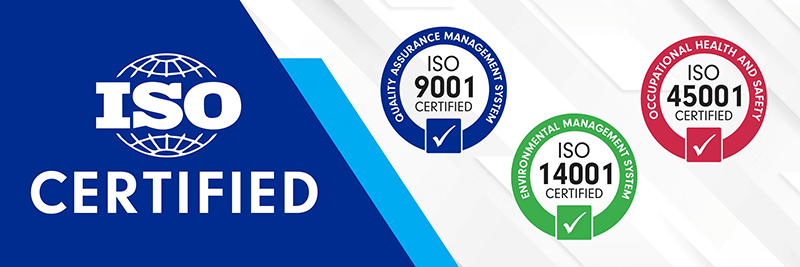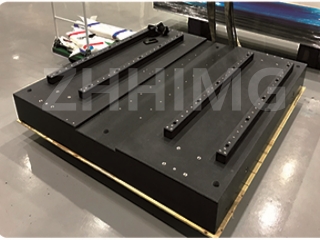In the fierce competition of "grid parity" in the photovoltaic industry, the cost optimization of every kilowatt-hour of electricity is related to the core competitiveness of enterprises. As a key equipment in the production of solar cell modules, the precision of the moving platform of the photovoltaic string welding machine directly affects the welding quality and production efficiency. The granite motion platform dedicated to photovoltaic string welding machines, with its ultimate dimensional stability of 0.5μm/year, provides technical support for reducing the cost per kilowatt-hour from multiple dimensions.
High stability ensures welding accuracy and reduces material waste
During the string welding process of photovoltaic cells, deviations in the welding position can lead to poor interconnection of the cells, thereby affecting the power generation efficiency of the modules and even generating defective products. The traditional motion platform is prone to dimensional deformation due to factors such as changes in environmental temperature and mechanical vibration, resulting in deviations in the welding position. The coefficient of thermal expansion of the granite sports platform is only (4-8) ×10⁻⁶/℃. Combined with its dense and uniform internal structure, dimensional stability of 0.5μm/year can be achieved.
Taking a 1GW photovoltaic module production line as an example, if a common motion platform is adopted, the deviation of the welding position caused by dimensional deformation exceeds 0.1mm, which may cause the welding defect rate of the solar cells to rise to 3%. When using granite sports platforms, the welding defect rate can be controlled within 0.5%. For every 1% reduction in the defect rate, over one million yuan worth of battery cells can be saved each year, directly lowering the production cost of components and laying the foundation for the decline in the cost per kilowatt-hour.

Reduce the frequency of equipment maintenance and improve production efficiency
A motion platform with poor dimensional stability will cause accelerated wear of transmission components and decreased positioning accuracy due to deformation during long-term use, and thus requires frequent equipment calibration and maintenance. Granite sports platforms, with their outstanding stability, can effectively reduce the occurrence of such problems.
Due to its tiny dimensional variation of 0.5μm per year, the wear degree of key components such as the transmission mechanism and positioning sensor of the string welding machine is significantly reduced. According to the actual measurement data of a certain photovoltaic manufacturing enterprise, after adopting the granite motion platform, the maintenance cycle of the string welding machine has been extended from once a month to once a quarter, and the single maintenance time has also been shortened from 8 hours to 3 hours. The reduction in the frequency of equipment maintenance means higher production efficiency and lower equipment operation and maintenance costs. Based on a production line with an annual capacity of 500MW, it can increase the effective production time by approximately 200 hours each year, produce more photovoltaic modules worth over 5 million yuan, and significantly reduce the cost per kilowatt-hour.
Extend the service life of equipment and reduce investment costs
The investment cost of photovoltaic production equipment is high, and the service life of the equipment directly affects the return on investment of enterprises. Due to long-term dimensional changes and structural deformations, ordinary motion platforms often fail to meet the high-precision production demands for more than five years. As a result, enterprises have to replace the equipment in advance, increasing the pressure of fixed asset investment.
Granite sports platforms, with their stable physical and chemical properties, can maintain high precision during long-term use and effectively extend the overall service life of the string welding machine. Data from a certain photovoltaic equipment manufacturer shows that the string welding machine equipped with a granite motion platform can still maintain a welding positioning accuracy within ±0.1mm after continuous use for 8 years, meeting the production requirements of high-efficiency components. In contrast, devices using ordinary motion platforms need to have their core components replaced or the entire machine upgraded after five years. The extension of the service life of equipment enables the fixed asset investment cost of enterprises to be allocated over a longer period, further reducing the equipment depreciation portion in the cost per kilowatt-hour.
Facilitate the production of efficient components and increase power generation revenue
The dimensional stability of 0.5μm/year provides a guarantee for the photovoltaic string welding machine to achieve higher-precision welding, enabling enterprises to produce photovoltaic modules with higher efficiency. In practical power station applications, high-efficiency components can achieve higher power generation capacity and lower attenuation rate, thereby enhancing the overall power generation revenue of the power station.
For instance, the double-sided double-glass modules with high-precision welding can increase the power generation efficiency by 3% to 5% compared with ordinary modules. Take a 100MW photovoltaic power station as an example. By using high-efficiency components, it can generate an additional 3 to 5 million kilowatt-hours of electricity annually. The increase in power generation revenue means a relative reduction in the cost per kilowatt-hour, further enhancing the economy and competitiveness of photovoltaic power stations.
The granite motion platform dedicated to photovoltaic string welding machines, with dimensional stability of 0.5μm/year as its core advantage, comprehensively reduces the production cost of photovoltaic modules and the cost per kilowatt-hour of power stations through multiple approaches such as ensuring welding accuracy, reducing equipment maintenance, extending equipment life, and facilitating the production of efficient components. It provides solid technical support for the photovoltaic industry to achieve "grid parity" and sustainable development.
Post time: May-21-2025

